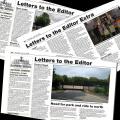
SIR: Reading your report “New battle over proposed mast” (Chronicle, November 5) was definitely a déjà vu moment for me. The technical justifications from the telecom operator’s agent versus the health concerns and siting objections of residents were only too familiar.
I still have an extensive archive relating to the high profile Byron Avenue battle against Orange, which started in December 2000 and lasted almost five years, involving a judicial review application against Winchester City Council, a redetermination of its original permission, a lengthy but eventually victorious Orange appeal and campaigners’ subsequent failed High Court and Appeal Court action.
Our campaign was costly and stressful but quite an education. The Labour Government at the time had benefited from auctioning 3G licences to the telecoms and the planning process was designed to enable the speedy roll-out of the network. Lip service was paid to consideration of possible health effects by producing Dept of Health warning leaflets and telling the telecoms not to market mobile phones to children under sixteen.
The situation with 5G and the current Government is very much the same. Changes in planning regulations favour developers in general and telecoms in particular, where full planning permission requirements have largely been replaced by permitted development, which limits the opportunities for community dissent. The more concerning aspect of the technology these days is the environmental impact of digital data storage centres with their huge and largely unsustainable energy requirements.
Karen Barratt,
Byron Avenue,
Fulflood,
Winchester



Comments: Our rules
We want our comments to be a lively and valuable part of our community - a place where readers can debate and engage with the most important local issues. The ability to comment on our stories is a privilege, not a right, however, and that privilege may be withdrawn if it is abused or misused.
Please report any comments that break our rules.
Read the rules hereLast Updated:
Report this comment Cancel